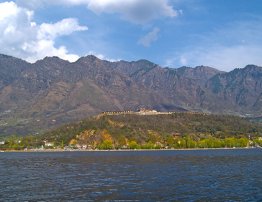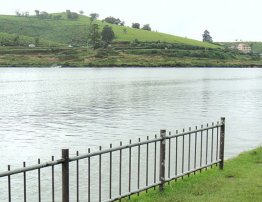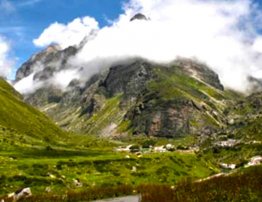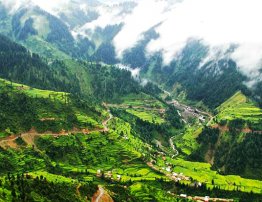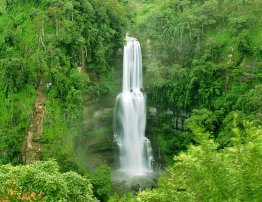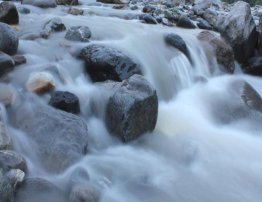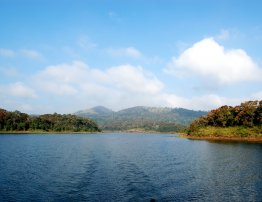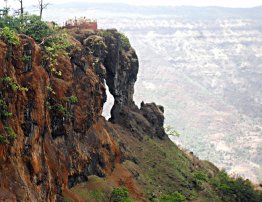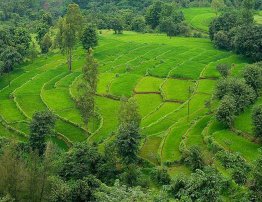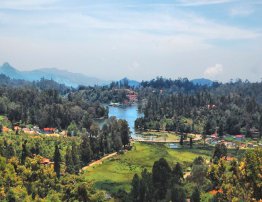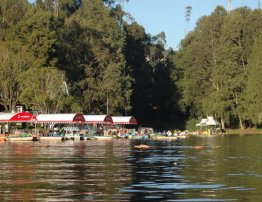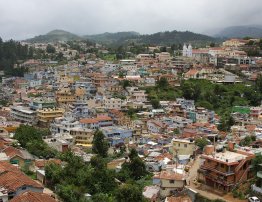Aurangabad
Introduction:
Aurangabad is an important city in the state of Maharashtra, India. There are many international tourists who visit Aurangabad to see the world heritage sites, The Ajanta & Ellora caves. Aurangabad, a dream destination of Mughal Emperor Aurangzeb, founded in 1610, is known today, as one of the four important cities in Maharashtra. The city is heading towards rapid industrial growth, but retains it's past glory and charms, heritage and traditions. Conspicuously seen on the Deccan plateau, it has a rich culture and a plethora of magnificent arts on display.
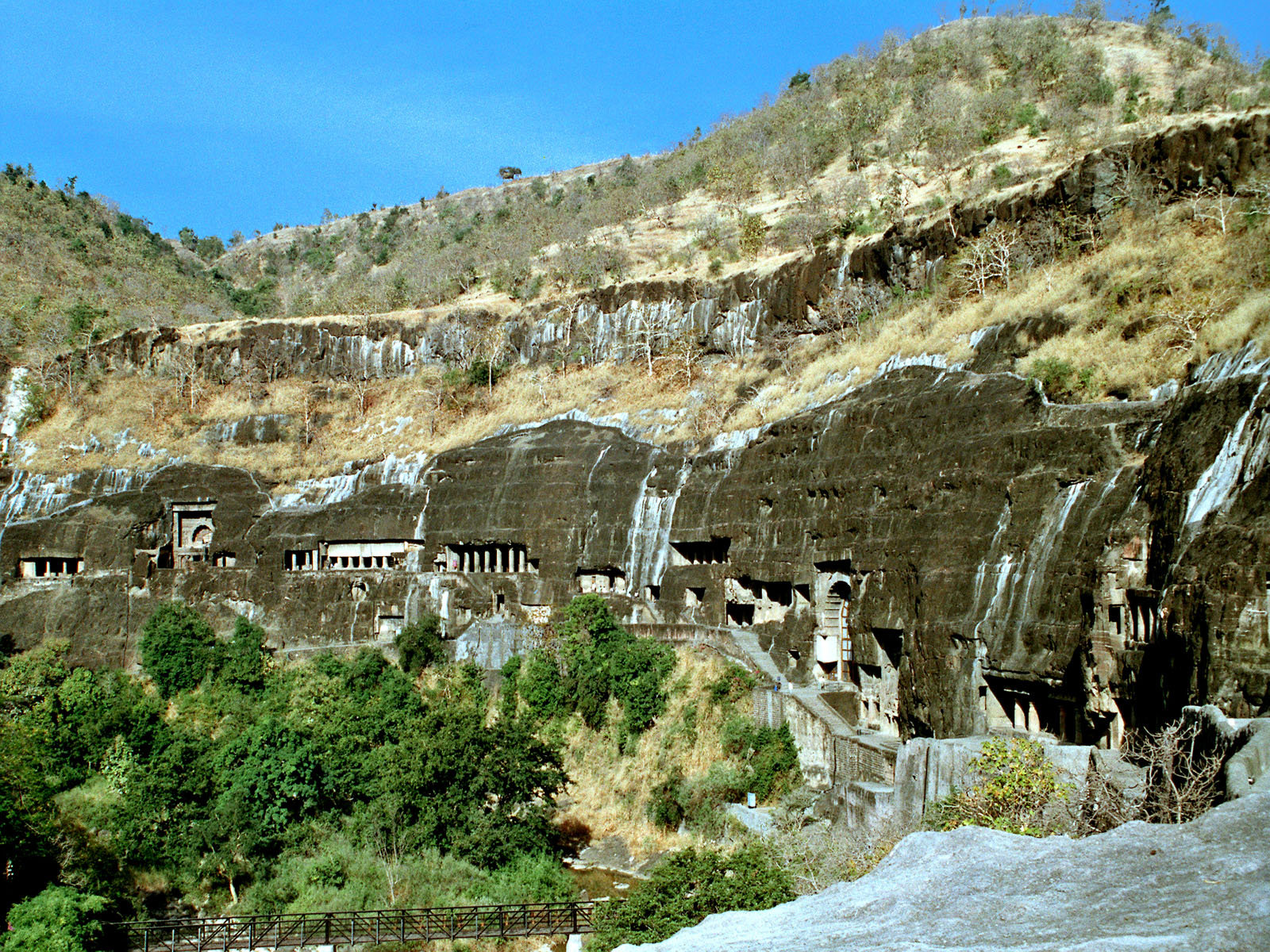
Destination Facts:
Location: Maharashtra, District Aurangabad
Area: 10,100 sq km (3,900 sq km)
Temperature: (Summer 20 to 43 °C) & (Winter 10 to 32 °C)
Languages Spoken: Marathi, English & Hindi
Getting There:
Nearest Airports: Aurangabad Airport, Chikalthana Airport, is 10 km away from the city centre.
Main Railway Station: Manmad is the nearest railway station 120 km away from main centre city.
Main Bus Station or Road: Direct bus from Mumbai.
Distance of a few Major Towns from Aurangabad:
Pune – 65km, Shirdi- 144km
Eating Around:
Typical Maharstrain food is the specialty in Aurangabad.
Places of Tourist Interest:
Aurangabad Caves:
The Aurangabad caves are an important tourist spot in Aurangabad. Built during the 6th and 7th century AD, these caves, have been divided in two groups namely the Eastern Group (Caves 1 to 5) and the Western Group (Caves 6 to 10). Both these groups have a distance of about half a kilometre between them. These Caves have interesting illustrations from the Jataka stories that belong to the Buddhist religion. They lie just beyond the city, nearly forgotten - the Aurangabad caves. Tantra influences echo in the highly ornate and strikingly detailed sculptures and architecture.
Ajanta:
Famous for its caves, Ajanta is one of the few historical and architectural marvels of India. Recognized as the World Heritage site today, it was discovered during the 19th century by a group of British officers who were on a tiger hunt. The Ajanta group of caves, located deep within the "Sahyadri hills" above the Waghora River, depicts the story of Buddhism that prevailed here during 200 BC to 650 AD.
Bibi ka Maqbara:
Bibi-ka-Maqbara is a tomb that bears some resemblance with the "Taj Mahal". This Maqbara attracts the tourists due to its wonderful architecture and historical importance. It is a mausoleum built in 1679, by Aurangzeb's son a tribute to his mother, "Begum Rabia- ud- Durani". Built at the centre of the garden, the marble used here is not as fine as that of Taj Mahal. Besides Bibi-ka-Maqbara, there are some other monuments of related historical importance. The entry into the Maqbara may cost you an entry ticket of a negligible amount.
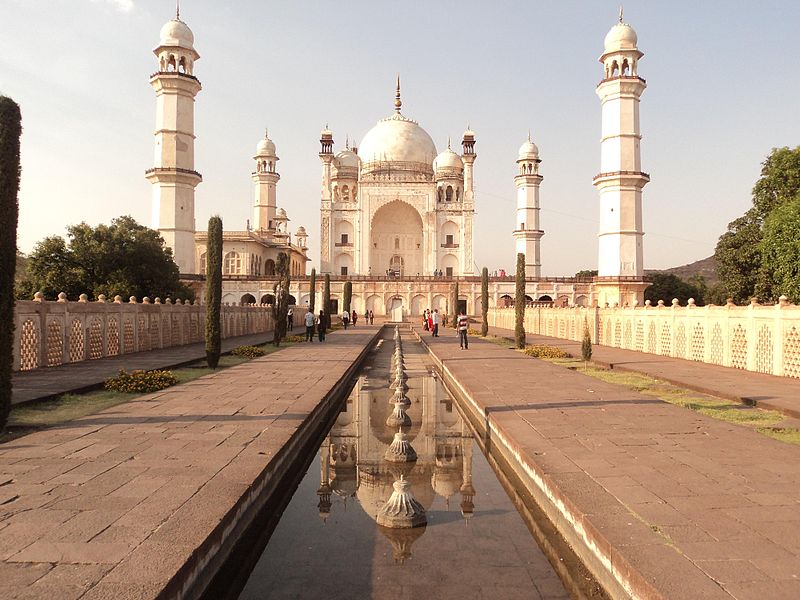
Bibi-Ka-Maqbara: Aurangabad
Daulatabad Fort:
Daulatabad fort is located just 13 kilometres from Aurangabad en-route Ellora. Easily accessible from the major towns nearby, the fort was built during the 12th century. Due to its uncommon location on a pyramid shaped hill, this impressive fortress attracts the attention of all. According to the locals here, the Daulatabad fortress was earlier known as 'Devgiri. It was built by king 'Bhillama' of Yadav dynasty. Later the name of the entire place was changed to Daulatabad by 'Mohammed Bin Tughlaq', Sultan of Delhi. Apart from this, a 5 km massive wall surrounds the fort; spiked gates of the fortress and the 30 metre high Chand Minar built by the Bahmani rulers also attract a number of tourists to this place every year.
Ellora:
Ellora is one of the highly visited World heritage sites of India. Just 30 kilometres Northwest of Aurangabad, Ellora is easily accessible from the nearby major towns. It houses 34 monasteries and temples with some exclusive uninterrupted sequence of monuments that date back from 600 to 1000 AD. The temples of Ellora are dedicated to Brahmanism, Jainism, and Buddhism. It also has some of the excellent stone work depicting the legends related to Lord Shiva.

Pan Chakki:
The word Panchakki literally means water mill. It is another major attraction of Aurangabad. The mill gets its share of water that travels through an underground channel from a source which is 6 km away in the mountains. The water is released on to the wheel creating an enthralling waterfall. The place also has a garden and fountains with fish-filled tanks enhancing the beauty of the entire area. Panchakki also has a tomb of Baba Shah Muzaffar, a Sufi Saint who was a spiritual adviser to Aurangzeb.
Getting around the Destination:
Bus, Rickshaw, and Taxi facility is provided to get around the destination in Aurangabad. One can take their private vehicle to go around.
Shopping Areas & Entertainment:
One can purchase Himroo shawls, Mashru and Kimkhab weaves, Bidriware, etc. The Paithani sarees seen at the shopping places in the city are a hot favorite amongst women shoppers. You can also shop for jewelry and semi-precious stones in Aurangabad, especially Agate in a variety of forms and sizes.
Additional Remark (e.g best time to visit, any festivals, any special occasions etc).
Best time to Visit:
October to March.
Festivals:
All festival of Maharashtra is celebrated over here.
 Use Coupon code
Use Coupon code


